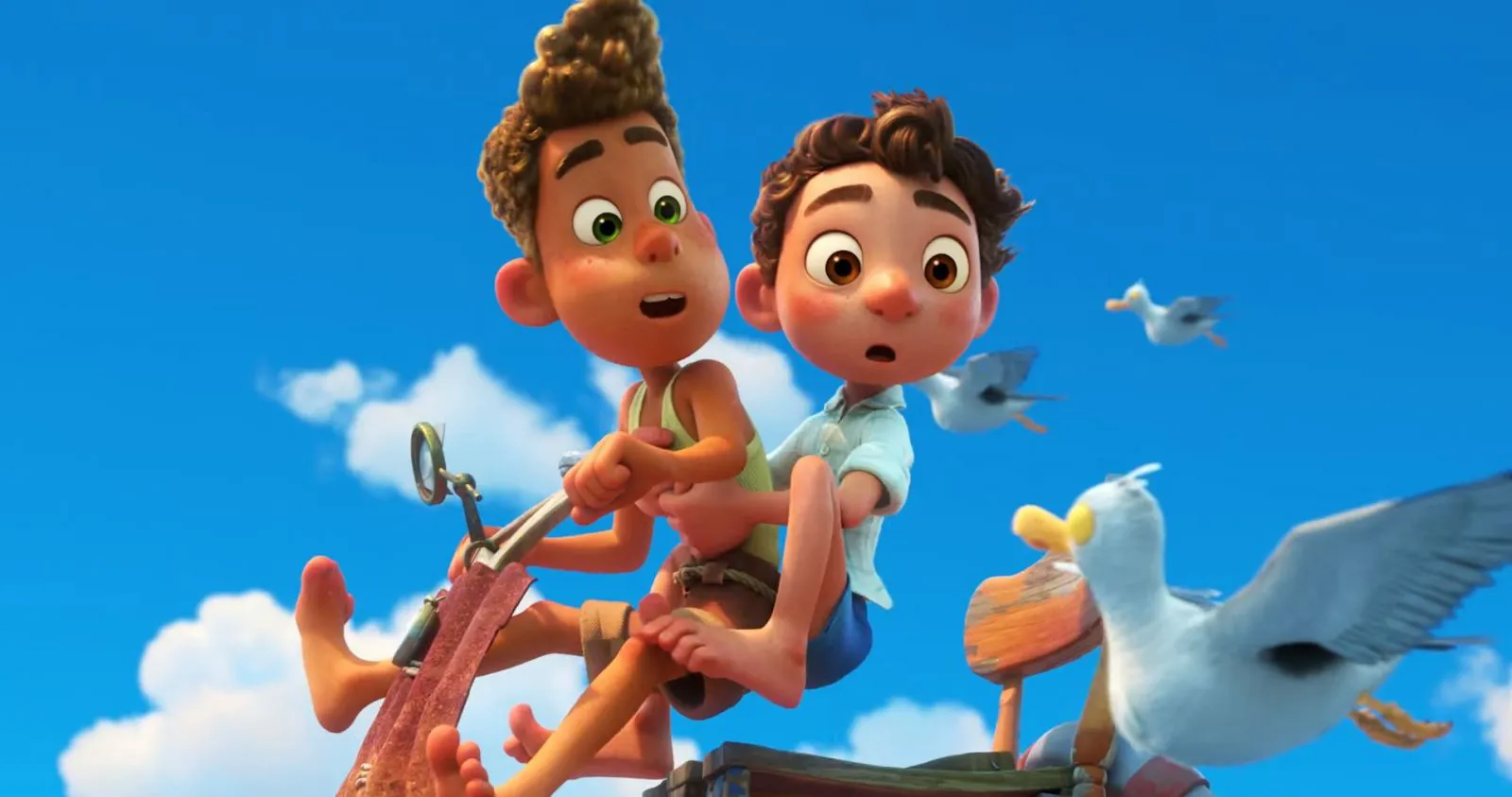Luca is a young sea monster living off the Italian coast with his family. Members of his species can transform into humans when they come ashore, but only the brave do so: most creatures are afraid of humans. Luca’s mother strictly forbids him from even getting close to anything human. But one day, he naturally breaks this rule. The culprit is the boisterous teenage monster Alberto, who introduces the hero to the joys of the human world: air, stars, and, not least, the Vespa scooter.
This two-wheeled marvel of Italian engineering becomes an object of obsession for the two boys. When Luca’s parents find out about his trips ashore, they decide to send him deep into the ocean to a nasty anglerfish uncle. He runs away from home and, together with Alberto, heads to the scariest place for a sea monster: the coastal town of Porto Rosso, whose inhabitants have hunted their kind for centuries (and still do). There, they meet a strange girl named Giulia and learn about the town’s triathlon competition, where the winner receives a small sum, enough to buy an old Vespa. Naturally, the friends decide to try their luck.

Still from the animated film “Luca”
The Story
The plot of “Luca” may seem overloaded at first glance. There’s a competition, a conflict with parents, a story about sea monsters, and that’s not even mentioning the subplots with Alberto and his absent father, the confrontation with the local arrogant overgrown teenager who’s a multiple triathlon winner, and the personal drama of Giulia’s stern parent, who also happens to be the main monster hunter in the area. But that’s just an illusion. In reality, despite the number of details and script branches, “Luca” is a very straightforward film about growing up and identification, about the importance of accepting those who are different from you, and even more importantly, accepting yourself. It’s like “Monsters, Inc.” that has swapped fantastic interiors for the sunny landscapes of the Italian Riviera.
Still from the animated film “Luca”
Simplicity is Key
But simplicity is not a flaw here. Pixar doesn’t like convoluted metaphors; everything is seemingly on the surface, but it hits as hard as some “deep” festival dramas. “Luca,” like its titular protagonist, avoids depth and isn’t going to live in the impenetrable darkness of the philosophical ocean. On the contrary, it exposes its dramatic structure to the viewer, clearly showing that even a thousand times overused monomyths can be made to work. You can easily guess how the film will end, when the friends will quarrel, when they will reconcile, and when their otherness will finally be accepted by the surrounding people and monsters. But even with a full understanding of the local drama’s mechanism, it’s hard not to fall under its tear-jerking, piercing effect.
Still from the animated film “Luca”
Pixar’s Magic
This is the great secret of Pixar: technological prophets and dramatic geniuses who understand the craft of screenwriting so well that even their not-so-best films are worth analyzing for examples in professional textbooks. Each line will find an effective conclusion, any gag from the beginning can suddenly return at the end, and the psychological stages that the characters need to go through, even if they stick out of the narrative structure like a bare wire, are read by any viewer on a subconscious level. This is precisely because we have seen similar stories more than once. Their cartoons may not be the gold standard of “smart” cinema, but they show what effects can be achieved by mastering classic plot structures, perfectly selected intonations, angles, and graceful movements of the 3D brush.
“Luca” may be a fairly average film by the studio’s standards, but it’s still a brilliant debut for director Enrico Casarosa and one of the best animated films of the year. Yes, it’s sometimes too schematic, and events often happen at the will of the script, not based on internal logic (the touching finale stands out in this regard). In a number of stories about the self-discovery of a not-quite-human through participation in a competition in Italy, it loses on all fronts to Miyazaki’s “Porco Rosso” (and this is not a random parallel; even the town where the action takes place is called Porto Rosso). But for once, Pixar makes a truly “children’s” film—and this time, it’s not even about death. Cute, warm, sunny, insert any other pleasant epithet. The kind that doesn’t make you want to lock yourself at home and contemplate the inevitability of your own demise and why you even exist in the world. Hard to believe, but the absence of an easily readable existential crisis in a children’s cartoon feels like an almost innovative creative decision.